The Golden Dorado or Salminus brasiliensis is a species of trophy fish that is considered to be one of the hardest fish to catch pound for pound. Also known as the River Tiger, they have the ability to leap out of the air with ease and have unmatched fighting power and stamina. Anglers from all over the world come to places like Argentina, Paraguay, Uruguay, Bolivia and Brazil to seek out these tasty fish! The warm waters of the Plate and Amazon systems are the best places to find these freshwater fish. It is also the national fish of Argentina where it is illegal to catch one.
Golden Dorado have a distinct golden coloration with large heads. They can grow to about 3' (1M) in length and can weighed up to 70lbs! They are vicious predators with powerful jaws and a mouth filled with sharp teeth. They go by a few different names including Dourado, Dorado, Harritetra and Jaw Characin.
These fish are carnivores that will often dine on Sabalo, but they will eat frogs, birds and even some mammals as well. You can check out the Golden Dorado in the video below...
If you have any additional information including recipes and fishing tips for the Golden Dorado please leave us a comment.
Find Your Fish
Subscribe to:
Post Comments (Atom)

- Acanthocybium solandri (1)
- Acanthodoras spinosissimus (1)
- Acanthuridae (5)
- Acanthurus leucosternon (1)
- Acanthurus sohal (1)
- Acanthurus sp. (1)
- Acanthurus triostegus (1)
- Acantopsis choirorhynchus (1)
- Acestrorhynchus falcatus (1)
- Acipenser fulvescens (1)
- Acipenser gueldenstaedtii (1)
- Acipenser ruthenus (1)
- Acipenser transmontanus (1)
- Acreichthys tomentosus (1)
- Adolfo's Catfish (1)
- Adolfo's Cory (1)
- Advanced Aquarium Fish (16)
- Aequidens rivulatus (1)
- Africa Wrasse (1)
- African Blockhead (1)
- African Brown Knife Fish (1)
- African Butterflyfish (1)
- African Glass Catfish (1)
- African Knife Fish (1)
- African Lungfish (1)
- African Moony (1)
- African Snook (1)
- African Tigerfish (1)
- Aggressive Tank Mates (1)
- Ahi (1)
- Aiptasia Eating Filefish (1)
- Alaskan Pollock (1)
- Albacore (1)
- Albino Aeneus Cory Cat (1)
- Albino Cory Cat (1)
- Albino Tiger Oscar (1)
- Alepisaurus brevirostris (1)
- Alepisaurus ferox (1)
- Alewife (1)
- Algae Eater (1)
- Alligator Gar (1)
- Alligatorfish (1)
- Allocyttus niger (1)
- Alopias vulpinus (1)
- Alosa mediocris (1)
- Alosa pseudoharengus (1)
- Alticus saliens (1)
- Amatitlania Nigrofasciata (1)
- Amazon Cachorro (1)
- Amberjacks (2)
- Ambloplites Ariommus (1)
- Ambloplites Constellatus (1)
- Ambloplites rupestris (1)
- Amblygobius rainfordi (1)
- Ameiurus melas (1)
- Ameiurus nebulosus (1)
- American Eel (1)
- American Flagfish (1)
- American smelt (1)
- Amia calva (1)
- Amphiprion akallopisos (1)
- Amphiprion melanopus (1)
- Amphiprion ocellaris (1)
- Anabantidae (1)
- Anabas testudineus (1)
- Anadromous (5)
- Anarhichas lupus (1)
- Anarrhichthys ocellatus (1)
- Anatomy (1)
- Anchovy (1)
- Ancistrus lineolatus (1)
- Anemone Demoiselle (1)
- Anemonefish (2)
- Angel Shark (1)
- Angelfish (13)
- Angler Fish (5)
- Anguilla anguilla (1)
- Anguilla dieffenbachii (1)
- Anguilla rostrata (1)
- Anguillidae (1)
- Anomalops katoptron (1)
- Anoplogaster cornuta (1)
- Anoplopoma fimbria (1)
- Antennarius commerson (1)
- Antennarius maculatus (1)
- Antennarius multiocellatus (1)
- Antennata Lionfish (1)
- Anthias (2)
- Apistogramma cacatuoides (1)
- Aplodinotus grunniens (1)
- Apogonidae (1)
- Apolemichthys trimaculatus (1)
- Apteronotus albifrons (1)
- Aptocyclus ventricosus (1)
- Aquarium Fish (229)
- Aquatic Chicken (1)
- Arabian Angelfish (1)
- Arabian Tang (1)
- Arapaima (1)
- Arapaima gigas (1)
- Arched Catfish (1)
- Archer Fish (1)
- Archoplites interruptus (1)
- Arctic Alligatorfish (1)
- Arctic Charr (1)
- Arctic Grayling (1)
- Argyropelecus Gigas (1)
- Arius jordani (1)
- Armoured Catfish (1)
- Arothron sp. (1)
- Arothron stellatus (1)
- Arowana (2)
- Arrowshaft (1)
- Arrowtooth Flounder (1)
- Aruan Tasek (1)
- Asfur Angelfish (1)
- Asian Carp (4)
- Asian Ram (1)
- Aspidontus taeniatus (1)
- Astronotus Ocellatus (2)
- Ateleopodidae (1)
- Atheresthes stomias (1)
- Atipa (1)
- Atlantic Angel Shark (1)
- Atlantic Bigeye (1)
- Atlantic Bluefin Tuna (1)
- Atlantic Catfish (1)
- Atlantic Cod (1)
- Atlantic Goliath Grouper (1)
- Atlantic Mackerel (1)
- Atlantic Spadefish (1)
- Atlantic Spearfish (1)
- Atlantic Tarpon (1)
- Atlantic Trumpetfish (1)
- Atlantic Wolffish (1)
- Atractosteus Spatula (1)
- Aulonocara nyassae (1)
- Aulostomus maculatus (1)
- Auratus Cichlid (1)
- Auriga Butterflyfish (1)
- Australian Ghost Shark (1)
- Australian lungfish (1)
- Australian Rainbow (1)
- Azure Damselfish (1)
- Bad Lucks (1)
- Bagarius yarrelli (1)
- Bait Fish (2)
- Bala Shark (1)
- Balantiocheilus melanopterus (1)
- Balistapus undulatus (1)
- Balistes capriscus (1)
- Balistes vetula (1)
- Balistoides Conspicillum (1)
- Balloon Porcupine Fish (1)
- Ballyhoo (1)
- Bamboo Shark (1)
- Banana Wrasse (1)
- Banded Corydoras (1)
- Banded Gunnel (1)
- Banded Rudderfish (1)
- Banggai Cardinalfish (1)
- Banjo Shark (1)
- Bar Dog (1)
- Barb (2)
- Barfish (1)
- Barracuda (2)
- Barramunda (1)
- Barred Jack (1)
- Barreleyes (1)
- Bartlett's Anthias (1)
- Bartletts Fairy Bass (1)
- Basking Shark (1)
- Bass (9)
- Bastard Eel (1)
- Batfish (2)
- Batrachoididae (2)
- Beaked Butterflyfish (1)
- Beaked Coralfish (1)
- Bearded Catfish (1)
- Bearded Ghoul (1)
- Beginner Aquarium fish (16)
- Belonidae (1)
- Betta Fish (1)
- Betta Splendens (1)
- Bichir (3)
- Big Belly Seahorse (1)
- Bigeye (1)
- Bigeye Soldierfish (1)
- Biggest Fish In The Ocean (1)
- Bigmouth Buffalo (1)
- Bigscale Logperch (1)
- Bigscale Sucker (1)
- Billfish (4)
- Billy Gar (1)
- Birdmouth Wrasse (1)
- bite (1)
- Biwako-ohnamazu (1)
- Black African Knifefish (1)
- Black Anemonefish (1)
- Black Angelfish (1)
- Black Banded Cat Shark (1)
- Black Bass (2)
- Black Bullhead (1)
- Black Catfish (1)
- Black Cod (1)
- Black Crappie (1)
- Black Drum (1)
- Black Eared Piranha (1)
- Black Fin Dart Goby (1)
- Black Fin Dartfish (1)
- Black Fin Shark (1)
- Black Ghost Knifefish (1)
- Black Grunt (1)
- Black Kingfish (1)
- Black Madtom (1)
- Black Marlin (1)
- Black Mullet (1)
- Black Oreo (1)
- Black Pacu (1)
- Black Patch Triggerfish (1)
- Black Piranha (1)
- Black Puffer (1)
- Black Saddle Pufferfish (1)
- Black Saddled Toby (1)
- Black Salmon (1)
- Black Seahorse (1)
- Black Shoulder Piranha (1)
- Black Snapper (1)
- Black Spinefoot (1)
- Black Surgeonfish (1)
- Black Swallower (1)
- Black-finned Pacu (1)
- Blackbelly Triggerfish (1)
- Blackedged Angelfish (1)
- Blackfish (1)
- Blackheaded Filefish (1)
- Blackline Penguinfish (1)
- Blackline Thayeria (1)
- Blackray Shrimp Goby (1)
- Blackside Hawkfish (1)
- Blacktail Angelfish (1)
- Blacktip Reef Shark (1)
- Blanquillo (1)
- Blenny (8)
- Blind Shark (1)
- Blobfish (1)
- Blockhead Cichlid (1)
- Blotched Bigeyes (1)
- Blotched Upside Down Catfish (1)
- Blue Betta (1)
- Blue Blanquillo (1)
- Blue Chromis (1)
- Blue Cod (1)
- Blue Dot Jawfish (1)
- Blue Flavivertex Dottyback (1)
- Blue gourami (1)
- Blue Nurse Sand Tiger (1)
- Blue Parrotfish (1)
- Blue Peacock Cichlid (1)
- Blue ram (1)
- Blue Sapphire Damselfish (1)
- Blue Shark (1)
- Blue Spotted Stingray (1)
- Blue Star Leopard Wrasse (1)
- Blue Sunfish (1)
- Blue-lined Sea Bream (1)
- Blueback Salmon (1)
- Blueback Trout (1)
- Blueface Angelfish (1)
- Bluefish (1)
- Bluegill (1)
- Bluespotted Cornetfish (1)
- Bluespotted Jawfish (1)
- Bluestripe Pipefish (1)
- Boar Grunt (1)
- Bodianus anthioides (1)
- Bodianus diana (1)
- Bodianus pulchellus (1)
- Bodianus rufus (1)
- Bolbometopon muricatum (1)
- Bone shark (1)
- Bonejack (1)
- Bony Fish (1)
- Bothidae (1)
- Bothus mancus (1)
- Botia macracantha (1)
- Bowfin (1)
- Bowmouth Guitarfish (1)
- Box Jellyfish (1)
- Boxfish (2)
- Brachaeluridae (1)
- Brachaelurus waddi (1)
- Brachionichthys hirsutus (1)
- Brachygobius doriae (1)
- Brackish Fish (5)
- Bramble Shark (1)
- Bream (2)
- Brismak (1)
- Bristlenose Fish (1)
- Bristletail Filefish (1)
- Broadbill (1)
- Broadnose Sevengill Shark (1)
- Bronze Bass (1)
- Bronze Whaler (1)
- Bronzeback (1)
- Brosme brosme (1)
- Brosmius (1)
- Broussonet Tarpon (1)
- Brown Bass (1)
- Brown Buffalo (1)
- Brown Bullhead (1)
- Brown Shark (1)
- Brown Trout (1)
- Brownbanded Bamboo Shark (1)
- Buffalo Cichlid (1)
- Buffalo Fish (2)
- Buffalo Fish Roundhead (1)
- Buffalo Parrotfish (1)
- Buffalohead (1)
- Bull Head (1)
- Bull Reds (1)
- Bull Shark (2)
- Bull Trout (1)
- Bullhead Catfish (1)
- Bullhead Shark (1)
- Bullheads (3)
- Bumble Bee Goby (1)
- Bumphead Parrotfish (1)
- Burbot (1)
- Burnett Salmon (1)
- Bursa Triggerfish (1)
- Busco (1)
- Butterfish (1)
- Butterfly Cichlid (1)
- Butterfly Cod (1)
- Butterfly Peacock Bass (1)
- Butterflyfish (6)
- Cabellerote (1)
- Cachama (1)
- Cajaro (1)
- Calico Bass (2)
- California Sheephead (1)
- Callichthyidae (3)
- Callionymidae (2)
- Calloplesiops altivelis (1)
- Callorhinchus milii (1)
- Canary Blenny (1)
- Canary Fang Blenny (1)
- Candiru (2)
- Candiru asu (1)
- Candlefish (1)
- Canero (1)
- Canthigaster jactator (1)
- Canthigaster janthinoptera (1)
- Canthigaster valentini (1)
- Capitaine (1)
- Caracanthus maculatus (1)
- Carangidae (2)
- Caranx ignobilis (1)
- Caranx vinctus (1)
- Carassius auratus (2)
- Carcharhinidae (1)
- Carcharhinus brachyurus (1)
- Carcharhinus brevipinna (1)
- Carcharhinus leucas (1)
- Carcharhinus melanopterus (1)
- Carcharhinus obscurus (1)
- Carcharhinus plumbeus (1)
- Carcharias taurus (1)
- Carcharodon carcharias (1)
- Carcharodon megalodon (1)
- Cardinalfish (2)
- Cariba Piranha (1)
- Carnivorous (51)
- Carp (4)
- Carpet Shark (2)
- Carpiodes cyprinus (1)
- Cascadu (1)
- Cat Shark (1)
- Catadromous (1)
- Catfish (22)
- Catostomus clarki (1)
- Catshark (3)
- Caulophryne jordani (1)
- Cave Angelfish (1)
- Cave Dwelling (2)
- Cave Transparent Goby (1)
- caviar (1)
- Celebes Half Beak (1)
- Centrarchidae (3)
- Centropomus ensiferus (1)
- Centropyge eibli (1)
- Centropyge flavissima (1)
- Centropyge loriculus (1)
- Cephaloscyllium ventriosum (1)
- Ceratodontidae (1)
- Ceratodontiformes (1)
- Cestracion Shark (1)
- Cetorhinus maximus (1)
- Chaetodipterus faber (1)
- Chaetodon auriga (1)
- Chaetodon lunula (1)
- Chaetodontidae (3)
- Chaetodontoplus duboulayi (1)
- Chain Eel (1)
- Chain Link Moray Eel (1)
- Chain Pickerel (1)
- Champsocephalus gunnari (1)
- Channa argus (1)
- Channa micropeltes (1)
- Channa pleurophthalmus (1)
- Channel Bass (1)
- Channel Buffalo (1)
- Channel Catfish (1)
- Characidae (2)
- Charr (3)
- Chauliodus sloani (1)
- Chaunacops melanostomus (1)
- Chelidonichthys spinosus (1)
- Chelmon rostratus (1)
- Cherry Gill (1)
- Chevron Tang (1)
- Chiasmodon niger (1)
- Chilean Sea Bass (1)
- Chiloscyllium punctatum (1)
- Chinese Algae Eater (1)
- Chironex fleckeri (1)
- Chitala lopis (1)
- Chlamydoselachus anguineus (1)
- Chocolate Gourami (1)
- Choerodon fasciatus (1)
- Christmas Island Anthias (1)
- Chromis (2)
- Chromis cyaneus (1)
- Chromis scotti (1)
- Chrysiptera hemicyanea (1)
- Chrysiptera springeri (1)
- Chrysiptera tricincta (1)
- Chub (1)
- Cichla ocellaris (1)
- Cichlasoma Citrinellum (1)
- Cichlasoma octofasciatum (1)
- Cichlid (15)
- Cigar Shark (1)
- Cinnamon Clownfish (1)
- Cirrhitichthys falco (1)
- Cirripectes stigmaticus (1)
- Citharichthys sordidus (1)
- Cleaner Mimic (1)
- Cleidopus gloriamaris (1)
- Climbing Perch (1)
- Clown Coris (1)
- Clown Frogfish (1)
- Clown Goby (1)
- Clown Loach (1)
- Clown Sweetlips (1)
- Clown Trigger Fish (1)
- Clownfish (3)
- Clupea pallasi (1)
- Clupeidae (1)
- Coalfish (1)
- Coat Of Mail Fish (1)
- Cobia (1)
- Cocinero (1)
- Cod (2)
- Codshark (1)
- Coelacanth (1)
- Coffinfish (1)
- Coho Salmon (1)
- Colored Filefish (1)
- Colorful (2)
- Colossoma macropomum (1)
- Columbia River Dace (1)
- Columbia Squawfish (1)
- Columbia sturgeon (1)
- Columbian Shark (1)
- Comet Grouper (1)
- Commerson's Cornetfish (1)
- Common Buffalo (1)
- Common Carp (1)
- Common Logperch (1)
- Common Roach (1)
- Common Sawshark (1)
- Common Sole (1)
- Common Thresher Shark (1)
- Community Fish (8)
- Conger conger (1)
- Conger Eel (1)
- Conger Moray (1)
- Congo Glass Catfish (1)
- Convict Cichlid (1)
- Convict Sturgeonfish (1)
- Convict Tang (1)
- Cookiecutter Shark (1)
- Copeina arnoldi (1)
- Copella nattereri (1)
- Copper Rockfish (1)
- Copper Shark (1)
- Copperband Butterflyfish (1)
- Copperbelly (1)
- Copperhead (1)
- Coral Catfish (1)
- Coral Trout (1)
- Coregonus clupeaformis (1)
- Coris aygula (1)
- Coronet (1)
- Corydoras adolfoi (1)
- Corydoras aeneus (1)
- Corydoras arcuatus (1)
- Coryphaena hippurus (1)
- Coryphopterus glaucofrenum (1)
- Corythoichthys haematopterus (1)
- Cosby gourami (1)
- Cottonfish (1)
- Cottus cognatus (1)
- Court Jester Goby (1)
- Cow Shark (1)
- Crabeaters (1)
- Crappie (2)
- Crenicara punctulata (1)
- Crescent Angelfish (1)
- Crescent Wrasse (1)
- Crescent-masked Butterflyfish (1)
- Croaker (2)
- Crocodile Flathead (1)
- Crocodile Needlefish (1)
- Crocodilefish (1)
- Cromileptes altivelis (1)
- Crossocheilus siamensis (1)
- Crowned Scythe (1)
- Cryptacanthodes aleutensis (1)
- Cryptocentrus cinctus (1)
- Cryptotora thamicola (1)
- Ctenochaetus binotatus (1)
- Ctenochaetus hawaiiensis (1)
- Ctenopharyngodon idella (1)
- Ctenopoma acutirostre (1)
- Cuban Hogfish (1)
- Cubicus Boxfish (1)
- Cuckoo Catfish (1)
- Cuckoo Synodontis (1)
- Currito (1)
- Cusk (2)
- Cutthroat Trout (1)
- Cuvier Bichir (1)
- Cyclops Shark (1)
- Cyclopterus lumpus (1)
- Cymatogaster aggregata (1)
- Cymbacephalus beauforti (1)
- Cynoscion nebulosus (1)
- Cyphotilapia frontosa (1)
- Cyprinidae (3)
- Cyprinus carpio (1)
- Dactyloptena orientalis (1)
- Dala (1)
- Dalmatian Molly (1)
- Damselfish (6)
- Dangerous (35)
- Danio (2)
- Danio choprai (1)
- Danio rerio (1)
- Danionella dracula (1)
- Danube Catfish (1)
- Darter (1)
- Dartfish (1)
- Dascyllus albisella (1)
- Dascyllus aruanus (1)
- Datnioides undecimradiatus (1)
- Datnoid (1)
- De Beaufort's Flathead (1)
- Deadly (4)
- Decorated Dartfish (1)
- Decorated Firefish (1)
- Decorated Rabbitfish (1)
- Deep Sea Fish (31)
- Deep Sea Hatchetfish (1)
- Deep Sea Perch (1)
- Deepest Living Fish (1)
- Dendrochirus biocellatus (1)
- Des Moines Plunger (1)
- Desert Sucker (1)
- Devil Fish (1)
- Dewfish (1)
- Diagonal-banded Sweetlips (1)
- Diamond Rainbowfish (1)
- Diana Hogfish (1)
- Dino Fish (1)
- Diodon holocanthus (1)
- Diodon Hystrix (1)
- Discus Fish (2)
- Dissostichus eleginoides (1)
- Divided Wrasse (1)
- Doctor Fish (1)
- Dog Characin (1)
- Dogfish (2)
- Dolly Varden (1)
- Dolphin Fish (1)
- Dorado (1)
- Doryrhamphus excisus (1)
- Dottyback (2)
- Double Full Red Cockatoo Cichlid (1)
- Double-Headed Parrotfish (1)
- Dourado (1)
- Dover Sole (1)
- Dowdies (1)
- Dracula Fish (1)
- Dragon Pipefish (1)
- Dragon Sea Moth (1)
- Dragonet (2)
- Dragonface Pipefish (1)
- Dragonfin (1)
- Drum (1)
- Drumfish (2)
- Duboulay's Angelfish (1)
- Dumeril's Shovelnose Ray (1)
- Dunkleosteus (1)
- Dusky Shark (1)
- Dwarf Blue Rainbowfish (1)
- Dwarf Butterfly Cichlid (1)
- Dwarf Hawkfish (1)
- Dwarf Lantern Shark (1)
- Dwarf Neon Rainbow (1)
- Dwarf Wrymouth (1)
- Earspot Coral Goby (1)
- Eastern Mosquitofish (1)
- Echidna catenata (1)
- Echidna nebulosa (1)
- Echiichthys Vipera (1)
- Echinorhinus brucus (1)
- Echinorhinus cookei (1)
- Ecsenius midas (1)
- Edible (109)
- Eel (16)
- Eel-Tailed Catfish (1)
- Eelpout (1)
- Eibl's Angelfish (1)
- Eibl's Pygmy Angelfish (1)
- Eigenmannia virescens (1)
- Elagatis bipinnulata (1)
- Electric Eel (1)
- Electric Ray (1)
- Electrophorus electricus (1)
- Elephant Fish (1)
- Elephant Nose (1)
- Elephant shark (2)
- Elopidae (1)
- Elops saurus (1)
- Elver (1)
- Ember Blenny (1)
- Emblemaria pandionis (1)
- Emerald Eye Rasbora (1)
- Emperor Red Snapper (1)
- Endangered (9)
- Engraulis encrasicolus (1)
- Epibulus insidiator (1)
- Epinephelus itajara (1)
- Epinephelus nigritus (1)
- Epinephelus quinquefasciatus (1)
- Eptatretus stoutii (1)
- Eqalussuaq (1)
- Equetus lanceolatus (1)
- Equetus punctatus (1)
- Erpetoichthys calabaricus (1)
- Esox Lucius (1)
- Esox masquinongy (1)
- Esox niger (1)
- Eucinostomus argenteus (1)
- Euprotomicrus bispinatus (1)
- European Anchovy (1)
- European Catfish (1)
- European Conger Eel (1)
- European Eel (1)
- European Flounder (1)
- European River Lamprey (1)
- European whiting (1)
- Eurypegasus draconis (1)
- Eurypharynx pelecanoides (1)
- Euxiphipops xanthometopon (1)
- Exocoetidae (1)
- Eyeless Cave Fish (1)
- Eyespot Rasbora (1)
- Falco Hawkfish (1)
- Fall Herring (1)
- Fallfish (1)
- False Boarfish (1)
- False Cleanerfish (1)
- False Clown Anemonefish (1)
- False Percula Clownfish (1)
- Fanfin Seadevil (1)
- Fangtooth Fish (1)
- Fastest Fish In The World (1)
- Fatback (1)
- Fatheaded Bicher (1)
- Featherback (1)
- Federation Pickerel. (1)
- Fiddler (1)
- Fiddler Stingray (1)
- Filamented Sand Dragon (1)
- Filefish (4)
- Filetail Catshark (1)
- Fire Clownfish (1)
- Fire Coral Eel (1)
- Fire Eel (1)
- Firefish (1)
- Fish (1)
- Fish That Walks On Land (1)
- Fishing Frog (1)
- Fishzilla (1)
- Fistularia commersonii (1)
- Fistulariidae (1)
- Five Banded Barb (1)
- Fivebarred Wrasse (1)
- Flagfin Angelfish (1)
- Flagfish (1)
- Flame Angelfish (1)
- Flame Firefish (1)
- Flannelmouth Grunt (1)
- Flashlight Fish (1)
- Flatfish (3)
- Flounder (4)
- Flowery Flounder (1)
- Flutefish (1)
- Flyfishing (2)
- Flying Carp (1)
- Flying Fish (1)
- Forked-tail Cat (1)
- Forster's Hawkfish (1)
- Fox Shark (1)
- Frankenfish (1)
- Freckled Hawkfish (1)
- French Angelfish (1)
- Fresh Water Fish (204)
- Freshwater Barracuda (1)
- Freshwater Catfish (1)
- Freshwater Cod (1)
- Freshwater Drum (1)
- Freshwater Killer Whale (1)
- freshwater smelt (1)
- Freshwater Taylo (1)
- Frilled Shark (1)
- Frogfish (3)
- Frontosa Cichlid (1)
- Frost Fish (2)
- Fu Manchu Lionfish (1)
- Gadidae (1)
- Gadus morhua (1)
- Galeocerdo cuvier (1)
- Gambusia Affinis (1)
- Gambusia holbrooki (1)
- Gamitana (1)
- Gar (4)
- Garden Eel (1)
- Garra rufa (1)
- Gasper goo (1)
- Gaspereau (1)
- Gasterosteidae (1)
- Gasterosteus aculeatus (1)
- Gelatinous Snailfish (1)
- Genicanthus watanabei (1)
- Georgia Bream (1)
- German Blue Ram (1)
- Giant Black Marlin (1)
- Giant Featherback (1)
- Giant Frogfish (1)
- Giant Lake Biwa Catfish (1)
- Giant Megamouth Shark (1)
- Giant Pacu (1)
- Giant Parrotfish (1)
- Giant Stingray (1)
- Giant Trevally (1)
- Giant White Shark (1)
- Gila Mountain Sucker (1)
- Ginglymostoma cirratum (1)
- Giraffe Cichlid (1)
- Glass Eel (1)
- Glass Eye Squirrelfish (1)
- Glass Knifefish (1)
- Glassy Sweeper (1)
- Glossolepis Incisus (1)
- Glowlight Danio (1)
- Gnathonemus petersii (1)
- Goatfish (1)
- Gobiidae (1)
- Gobiodon atrangulatus (1)
- Goblin Shark (1)
- Goby (8)
- Goggle Eye (1)
- Goggle-eye (1)
- Gold Algae Eater (1)
- Gold Datnoid (1)
- Gold gourami (1)
- Gold Royal Pleco (1)
- Golden Dorado (1)
- Golden Hamlet (1)
- Golden Weather Loach (1)
- Goldentail Moray (1)
- Goldfish (2)
- Goldman´s Sweetlips (1)
- Golets (1)
- Goliath Grouper (1)
- Goliath Tigerfish (1)
- Gomphosus caeruleus (1)
- Goo Obo Gudgeon (1)
- Goodoo (1)
- Goonch Catfish (1)
- Gourami (3)
- Gourdhead (1)
- Gramma loreto (1)
- Grammidae (1)
- Grass Carp (1)
- Gray Bass (1)
- Gray Bichir (1)
- Gray Drum (1)
- Gray Herring (1)
- Gray Pickerel (1)
- Gray Pike (1)
- Gray Snapper (1)
- Gray Triggerfish (1)
- Grayback (1)
- Grayfish (1)
- Grayling (1)
- Great Barracuda (1)
- Great Hammerhead Shark (1)
- Great White Shark (1)
- Greater Amberjacks (1)
- Greater Silver Hatchetfish (1)
- Greater Weever (1)
- Green Bass (1)
- Green Birdmouth Wrasse (1)
- Green Humphead Parrotfish (1)
- Green Knifefish (1)
- Green Mandarin (1)
- Green Mandarinfish (1)
- Green Moon Wrasse (1)
- Green Moray Eel (1)
- Green Skate (1)
- Green Terror (1)
- Green Thresher (1)
- Green Trout (1)
- Greenfish (1)
- Greenland Shark (1)
- Grey Nurse Shark (1)
- Grey Shark (1)
- Grey Snapper (1)
- Grey Trout (1)
- Grinder (1)
- Grindle (1)
- Grinnel (1)
- Ground Shark (1)
- Grouper (4)
- Grunt (3)
- Guadalupe Bass (1)
- Gudgeon (1)
- Guentheri Killifish (1)
- Guitarfish (2)
- Gulf Saratoga Barramundi (1)
- Gulper (1)
- Gumdrop Coral Croucher (1)
- Gunnel Fish (1)
- Guppy (1)
- Gurnard (2)
- Gurry Shark (1)
- Gymnothorax favagineus (1)
- Gymnothorax funebris (1)
- Gymnothorax miliaris (1)
- Gyrinocheilus aymonieri (1)
- Hackleback (1)
- Hadal Snailfish (1)
- Haemulon plumieri (1)
- Hairen (1)
- Hairy Tiger Plecostomus (1)
- Half Blue Damselfish (1)
- Halfbeak (2)
- Halibut (1)
- Halichoeres iridis (1)
- Hamlet (1)
- Hammerhead Shark (1)
- Harlequin Ghost Pipefish (1)
- Harlequin Sweetlips (1)
- Harlequin Tusk (1)
- Harritetra (1)
- Hass's Garden Eel (1)
- Hassar (1)
- Hatchetfish (1)
- Hawaiian Bristletooth (1)
- Hawaiian Dascyllus (1)
- Hawaiian Domino Damselfish (1)
- Hawaiian Salmon (1)
- Hawaiian Squirrelfish (1)
- Hawaiian Surgeonfish (1)
- Hawkfish (3)
- Headfish (1)
- Helostoma temmincki (1)
- Hemiramphus brasiliensis (1)
- Hemiscyllium halmahera (1)
- Hemitaurichthys polylepis (1)
- Herbivore (5)
- Hercules Cichlid (1)
- Herichthys cyanoguttatus (1)
- hermaphrodite (1)
- Herring (3)
- Heterodontidae (1)
- Heterodontus francisci (1)
- Heterodontus japonicus (1)
- Heterodontus portusjacksoni (1)
- Heteropriacanthus cruentatus (1)
- Hexanchidae (1)
- Hexanchus griseus (1)
- Hexazon Barb (1)
- Hi Fin Platy (1)
- Hi Fin Red Banded Goby (1)
- Hi-spot Rasbora (1)
- Hickory Shad (1)
- Hifin Snapper (1)
- High-Back Buffalo (1)
- Himantura chaophraya (1)
- Hippocampus abdominalis (1)
- Hippocampus bargibanti (1)
- Hippocampus comes (1)
- Hippocampus erectus (1)
- Hippocampus ingens (1)
- Hippoglossus stenolepis (1)
- Hitch (1)
- Hockey-Stick Tetra (1)
- Hogfish (4)
- Honeycomb Puffer (1)
- Hoplosternum littorale (1)
- Hoplostethus atlanticus (1)
- Horn Shark (2)
- Horned Pout (2)
- Hornpout (1)
- Horseface Blenny (1)
- Horseface Loach (1)
- Houndfish (1)
- Hovercraft Boxfish (1)
- Huachinango (1)
- Huma Huma Trigger (1)
- Humbug (1)
- humorous (1)
- Hump-Back Buffalo (1)
- Humpback Sucker (1)
- Humpback Turretfish (1)
- Humphead Cichlid (1)
- Humphead Parrotfish (1)
- humu-humu-nuku-nuku-a-puaa (1)
- Hvilling (1)
- Hydrocynus forskalii (1)
- Hydrocynus goliath (1)
- Hydrocynus vittatus (1)
- Hydrolagus colliei (1)
- Hydrolycus scomberoides (1)
- Hyphessobrycon callistus (1)
- Hypophthalmichthys molitrix (1)
- Hypoplectrus guttavarius (1)
- Ice Fish (1)
- Ictalurus punctatus (1)
- Ictiobus bubalus (1)
- Ictiobus cyprinellus (1)
- Iga Tubumata (1)
- Ilkalupik (1)
- Improved Bream (1)
- inconnu (1)
- Indo-Pacific Tarpon (1)
- Indonesian Featherback (1)
- Inimicus didactylus (1)
- Intermediate Aquarium Fish (3)
- Intermediate Lizardfish (1)
- Invasive Species (9)
- Iridis Wrasse (1)
- Isistius brasiliensis (1)
- Istiophorus Albicans (1)
- Istiophorus Platypterus (1)
- Isurus oxyrinchus (1)
- Jack Dempsey Fish (1)
- Jack Fish (1)
- Jackknife Fish (1)
- Jacks (3)
- Japanese Bullhead Shark (1)
- Japanese Horn Shark (1)
- Jardini Arowana (1)
- Jaw Characin (1)
- Jawfish (2)
- Jellyfish (1)
- Jellynose Fish (1)
- Jerusalem Haddock (1)
- Jewel Tetra (1)
- Jeweled Goby Cichlid (1)
- Jewfish (1)
- Jordan's Catfish (1)
- Jordanella floridae (1)
- Jumping Characin (1)
- Kangal Fish (1)
- Kaudern's Cardinal (1)
- Kelp Bass (1)
- Kentucky Bass (1)
- Key West Grunt (1)
- Kiack (1)
- Kihikihi (1)
- Killifish (2)
- King Mackerel (1)
- King Of Herrings (1)
- Kingfish (1)
- Kisser Fish (1)
- Kissing Gourami (1)
- Knifefish (5)
- Knight Fish (1)
- Koi (1)
- Koiro (1)
- Kokanee (1)
- Kwi Kwi (1)
- Labridae (4)
- Labyrinth Fish (1)
- Lactoria cornuta (1)
- Lady Cat (1)
- Ladyfish (1)
- Lake Charr (1)
- Lake Lamprey (1)
- Lake Sturgeon (1)
- Lake Trout (1)
- Lake Whitefish (1)
- Lamna ditropis (1)
- Lamna nasus (1)
- Lampern (1)
- Lampetra fluviatilis (1)
- Lamprey Eel (2)
- Lampris gutatus (1)
- Lancetfish (1)
- Lantern Fish (1)
- Largemouth Bass (1)
- Largest Eel (1)
- Largest Freshwater Fish (1)
- Lates niloticus (1)
- Latimeria chalumnae (1)
- Lavinia exilicauda (1)
- Lawyer (1)
- Lawyer Fish (1)
- Lctaluridae (1)
- Leafy Sea Dragon (1)
- Leans (1)
- Leaping Blenny (1)
- Leaping Mullet (1)
- Leatherjacket (1)
- leefish (1)
- Leeman (1)
- Lefteye Flounder (1)
- Lemon shark (1)
- Lemon Tang (1)
- Lemonfish (1)
- Lemonpeel Angelfish (1)
- Leopard Coral Grouper (1)
- Leopard Coral Trout (1)
- Leopard Ctenopoma (1)
- Leopard Shark (1)
- Lepisosteus oculatus (1)
- Lepisosteus osseus (1)
- Lepisosteus platostomus (1)
- Lepomis gulosus (1)
- Lepomis macrochirus (1)
- Lepomis microlophus (1)
- Lessor Weever Fish (1)
- Lined Seahorse (1)
- Lined Sweetlips (1)
- Ling (1)
- Lingcod (1)
- Lionfish (4)
- Lionhead (1)
- Lionhead Cichlid (1)
- Liparis fabricii (1)
- Little Dermatologists (1)
- Little Dragon Fish (1)
- Little Spinefoot (1)
- Liza saliens (1)
- Lizardfish (1)
- Loach (3)
- Logperch (2)
- Long Nose Spearfish (1)
- Long-lure Frogfish (1)
- Long-Spine Porcupinefish (1)
- Longbill Spearfish (1)
- Longest Fish In The Ocean (1)
- Longest Teeth In The Ocean (1)
- Longfin Cardinalfish (1)
- Longfin Eel (1)
- Longhorned Cowfish (1)
- Longnose Gar (1)
- Longnose Hawkfish (1)
- Longnose Lancetfish (1)
- Longnose Sawshark (1)
- Longnosed Filefish (1)
- Longsnout Stinger (1)
- Lookdown (1)
- Lophius piscatorius (1)
- Lota lota (1)
- Lotidae (1)
- Lowyer (1)
- Luminous Shark (1)
- Lumpenus fabricii (1)
- Lumpfish (1)
- Lumphead (1)
- Lumpsuckers (1)
- Lunare Wrasse (1)
- Lungfish (2)
- Lunule Butterflyfish (1)
- Luo (1)
- Lutjanidae (1)
- Lutjanus apodus (1)
- Lutjanus campechanus (1)
- Lutjanus griseus (1)
- Lutjanus sebae (1)
- LY (1)
- Lycodes polaris (1)
- Lyretail Guppy (1)
- Lyretail Hogfish (1)
- Lyretail Wrasse (1)
- Maccullochella peelii peelii (1)
- Mackerel (2)
- Mackinaw (1)
- Macropharyngodon bipartitus (1)
- Macropinna microstoma (1)
- Madtom (1)
- Magenta Dottyback (1)
- Magpie Ray (1)
- Mahi Mahi (1)
- Majestic Snapper (1)
- Majestic Surgeon (1)
- Majestic Tang (1)
- Makaira indica (1)
- Mako Shark (1)
- Makorepe (1)
- Malacanthus latovittatus (1)
- Malawi Golden Cichlid (1)
- Mamulan Fish (1)
- Mandarin Goby (1)
- Mandarinfish (1)
- Mango Snapper (1)
- Mangrove Snapper (1)
- Manini (1)
- Manitou Darter (1)
- Marbled Molly (1)
- Marine Betta (1)
- Marine Stinger (1)
- Mariposa (1)
- Marlin (2)
- Martson Trout (1)
- Masked Spinefoot (1)
- Mastacembelus armatus (1)
- Mastacembelus erthrotaenia (1)
- Matted Filefish (1)
- Matted Leatherjacket (1)
- Mega Tooth Shark (1)
- Megachasma pelagios (1)
- Megachasmidae (1)
- Megalodon (1)
- Megalops atlanticus (1)
- Megalops cyprinoides (1)
- Meiacanthus oualanensis (1)
- Mekong Giant Catfish (1)
- Mekong Tiger Perch (1)
- Melanochromis auratus (1)
- Melanotaenia praecox (1)
- Melanotaenia splendida (1)
- Melgrim (1)
- Menominee (1)
- Merlan (1)
- Merlangius merlangus (1)
- Merluza Negra (1)
- Mero (1)
- Messmate Pipefish (1)
- Metynnis argenteus (1)
- Microdesmidae (1)
- Micropterus dolomieui (1)
- Micropterus punctulatus (1)
- Micropterus salmoides (1)
- Micropterus treculii (1)
- Midas Blenny (1)
- Midas Child (1)
- Midas Goby (1)
- Midnight Arothron Puffer (1)
- Minnow (3)
- Mintai (1)
- Mirror Anthias (1)
- Misgurnus anguillicaudatus (1)
- Mitsukurina owstoni (1)
- Mitsukurinidae (1)
- Mo-mouth (1)
- Mogurnda nesolepis (1)
- Mojarra (1)
- Mola Mola Fish (1)
- Molly (2)
- Monkfish (2)
- Mono Sebae (1)
- Monodactylus sebae (1)
- Moon Wrasse (1)
- Moonfish (5)
- Moorish Idol (1)
- Moray Eel (4)
- Morgan (1)
- Morone americana (1)
- Morone chrysops (1)
- Morone saxatilis (1)
- Mosquitofish (1)
- Most Expensive Fish (1)
- Most Powerful Bite (1)
- Mottled Bicher (1)
- Mouth Brooding (5)
- Moxostoma macrolepidotum (1)
- Mozambique Tilapia (1)
- Mud Bass (1)
- Mud Cat (1)
- Mud Pout (1)
- Mud Skate (1)
- Mudfish (1)
- Mudgapper (1)
- Mudskipper (1)
- Mudtoad (1)
- Mugil cephalus (1)
- Mugilidae (2)
- Mullet (2)
- Multi-spotted Catfish (1)
- Murray Cod (1)
- Muskellunge (1)
- Muskie (1)
- Mystery Wrasse (1)
- Narcine brasiliensis (1)
- Narrowtooth Shark (1)
- Naughty Tang (1)
- Needlefish (1)
- Needlenose Gar (1)
- Negaprion brevirostris (1)
- Nemateleotris decora (1)
- Nematistius pectoralis (1)
- Neoceratodus forsteri (1)
- Neoclinus blanchardi (1)
- Neogobius melanostomus (1)
- Neon Damselfish (1)
- Neon Swordtail (1)
- New Species (1)
- New Zealand Longfin Eel (1)
- Ngoio (1)
- Nibble Fish (1)
- Nicaragua Shark (1)
- Nile Perch (1)
- Nile Tilapia (1)
- Nimbochromis venustus (1)
- Ninespine Stickleback (1)
- Nocturnal (17)
- Nomorphamphus liemi (1)
- Northern Bluefin Tuna (1)
- Northern Pike (1)
- Northern Pikeminnow (1)
- Northern Redhorse (1)
- Northern Seahorse (1)
- Northern Snakehead (1)
- Northern Spotted Barramundi (1)
- Northern Squawfish (1)
- Nosestripe Anemonefish (1)
- Nothobranchius guentheri (1)
- Notorynchus cepedianus (1)
- Nototeridae (1)
- Nottled Sanddab (1)
- Noturus flavus (1)
- Noturus funebris (1)
- Nurse Shark (1)
- Oarfish (1)
- Oblique-banded Sweetlips (1)
- Ocean Catfish (2)
- Ocean Cobbler (1)
- Ocean Perch (1)
- Ocean Sun Fish (1)
- Ocellated Lionfish (1)
- Ocellated Rasbora (1)
- Ocellated Snakehead (1)
- Ocyurus chrysurus (1)
- Ogcocephalus darwini (1)
- Old Glory (1)
- Omnivore (40)
- Oncorhynchus clarkii (1)
- Oncorhynchus kisutch (1)
- Oncorhynchus mykiss (1)
- Oncorhynchus nerka (1)
- One Spot Foxface (1)
- Ono (1)
- Opah (1)
- Opaline Gourami (1)
- Open Mouth (1)
- Ophioblennius atlanticus (1)
- Ophiodon elongatus (1)
- Opistognathus aurifrons (1)
- Opistognathus rosenblatti (1)
- Opsanus tau (1)
- Orange Roughy (1)
- Orange Stripe Butterfly (1)
- Orangehead Wrasse (1)
- Orangelined Angelfish (1)
- Orangelined Triggerfish (1)
- Orangetailed Triggerfish (1)
- Orbic Batfish (1)
- Orbic Platax (1)
- Orbiculate Batfish (1)
- Orectolobus maculatus (1)
- Oregon sturgeon (1)
- Oreo Dory (1)
- Oreochromis mossambicus (1)
- Oreochromis niloticus (1)
- Orgefish (1)
- Oriental Dogfish (1)
- Oriental Flying Gurnard (1)
- Orinoco Piranha (1)
- Ornate Ghost Pipefish (1)
- Oscar Fish (2)
- Osmerus mordax (1)
- Osteoglossum bicirrhosum (1)
- Ostraciiadae (1)
- Ostracion cubicus (1)
- Oswego Bass (1)
- Oualan Forktail Blenny (1)
- oviparous (1)
- ovoviviparous (9)
- Oxeye (1)
- Oxycirrhites typus (1)
- Oxymonacanthus longirostris (1)
- Oyster Cracker (1)
- Oyster Toadfish (1)
- Pacific Black Marlin (1)
- Pacific Goliath Grouper (1)
- Pacific Hagfish (1)
- Pacific Halibut (1)
- Pacific Herring (1)
- Pacific Ocean Perch (1)
- Pacific Sailfin Tang (1)
- Pacific Sanddab (1)
- Pacific Seahorse (1)
- Pacific Spotted Velvetfish (1)
- Pacific sturgeon (1)
- Pacu (1)
- Paddlefish (1)
- Paedocypris progenetica (1)
- Paiche (1)
- Painted Triggerfish (1)
- Panaque nigrolineatus (1)
- panfish (4)
- Pangasianodon gigas (1)
- Panther Grouper (1)
- Pantodon buchholzi (1)
- Papagallo (1)
- Paperbellies (1)
- Papermouth (1)
- Papiliochromis ramirezi (1)
- Parablennius gattorugine (1)
- Paracirrhites forsteri (1)
- Parailia congica (1)
- Paralabrax clathratus (1)
- Paraplesiops meleagris (1)
- Pargo (1)
- Parmaturus xaniurus (1)
- Parrit (1)
- Parrot Fish (3)
- Parupeneus barberinus (1)
- Patagonian Toothfish (1)
- Payara (1)
- Peacock Bass (1)
- Peacock Cichlid (1)
- Peacock Flounder (1)
- Peacock Rainbowfish (1)
- Pearlscale Butterflyfish. Chaetodon xanthurus (1)
- Pearly Razorfish (1)
- Peckoltia sp (1)
- Pegasus Sea Moth (1)
- Pelican Eel (1)
- Pempheris schomburgki (1)
- Penguin Fish (1)
- Penguin Tetra (1)
- Perca Flavescens (1)
- Perch (5)
- Percidae (1)
- Percina caprodes (1)
- Percina macrolepida (1)
- Periophthalmus modestus (1)
- Permit Fish (1)
- Pervagor melanocephalus (1)
- Peto (1)
- Petromyzon marinus (1)
- Pez Gallo (1)
- Philippines Chevron Butterflyfish (1)
- Pholis fasciata (1)
- Phractocephalus hemioliopterus (1)
- Phycodurus eques (1)
- Picasso Triggerfish (1)
- Picture Dragonet (1)
- Pig Faced (1)
- Pigeon Blood Discus (1)
- Pike (2)
- Piked Dogfish (1)
- Pilot Fish (1)
- Pimelodidae (1)
- Pimpfish (1)
- Pineapple Fish (1)
- Pinecone Fish (1)
- Pink Kisser (1)
- Pipefish (3)
- Piranha (3)
- Pirarara (1)
- Pirarucu (1)
- Pla Satu (1)
- Platax orbicularis (1)
- Platichthys flesus (1)
- Platinum Arowana (1)
- Platyfish (1)
- Pleco (2)
- Plectorhinchus chaetodonoides (1)
- Plectorhinchus lineatus (1)
- Plectropomus leopardus (1)
- Plegonero (1)
- Plotosidae (1)
- Plotosus lineatus (1)
- Plownose Chimaeras (1)
- Poecilia latipinna (1)
- Poecilia reticulata (1)
- Pogonias cromis (1)
- Polar Eelpout (1)
- Polka Dot Boxfish (1)
- Polka Dot Grouper (1)
- Pollock (1)
- Polydon spathula (1)
- Polypteridae (1)
- Polypterus retropinnis (1)
- Polypterus senegalus (1)
- Polypterus weeksii (1)
- Pomacanthidae (7)
- Pomacanthus asfur (1)
- Pomacanthus paru (1)
- Pomacanthus xanthometopon (1)
- Pomacentridae (2)
- Pomacentrus alleni (1)
- Pomoxis annularis (1)
- Pomoxis nigromaculatus (1)
- Poor Man's Lobster (1)
- Popeyed Scorpionfish (1)
- Poraque (1)
- Porbeagle Shark (1)
- Porcupine Fish (1)
- Porcupine Puffer (1)
- Port Jackson Shark (2)
- Powder Blue Surgeonfish (1)
- Powder Blue Tang (1)
- Praecox Rainbow (1)
- Prawn Goby (1)
- Prehistoric Fish (2)
- Priacanthus arenatus (1)
- Prickly Shark (1)
- Prince Axel’s Wonder Fish (1)
- Prionace glauca (1)
- Pristigenys alta (1)
- Pristiophoridae (1)
- Pristiophorus cirratus (1)
- Pristis pectinata (1)
- Prosopium cylindraceum (1)
- Protopterus Annectens (1)
- Pseudanthias bartlettorum (1)
- Pseudanthias pleurotaenia (1)
- Pseudocheilinus ocellatus (1)
- Pseudochromis (1)
- Pseudochromis flavivertex (1)
- Pseudochromis porphyreus (1)
- Pseudoliparis amblystomopsis (1)
- Psychedelic Fish (1)
- Psychedelic Mandarinfish (1)
- Psychrolutes marcidus (1)
- Pterapogon kauderni (1)
- Ptereleotris evides (1)
- Pterois antennata (1)
- Pterois volitans (1)
- Pterophyllum scalare (1)
- Pterophyllum sp. (1)
- Ptychocheilus oregonensis (1)
- Puffer Fish (7)
- Pungitius pungitius (1)
- Puntius pentazona (1)
- Puntius tetrazona (1)
- Purple Blotch Basslet (1)
- Purple Chromis (1)
- Purple Dartfish (1)
- Purple Dottyback (1)
- Pygmy Seahorse (1)
- Pygmy Shark (1)
- Pygocentrus Nattereri (1)
- Pyramid Butterflyfish (1)
- Queen Triggerfish (1)
- Queensland Lungfish (1)
- Quillback (1)
- Rabbit Fish (3)
- Raccoon Butterflyfish (1)
- Rachycentron canadum (1)
- Radiant Wrasse (1)
- Ragged Finned Firefish (1)
- Rainbow Fish (3)
- Rainbow Runner (1)
- Rainbow Smelt (1)
- Rainbow Trout (1)
- Rainbow Yellowtail (1)
- Rainford's Goby (1)
- Ram Cichlid (1)
- Ramirez's Dwarf Cichlid (1)
- Ramirezi (1)
- Rasbora (1)
- Rasbora dorsiocellata (1)
- Ratfish (1)
- Rays (3)
- Razorback Buffalo (1)
- Razorback Sucker (1)
- Razorfish (1)
- Red and Black Anemonefish (1)
- Red and Black Clownfish (1)
- Red Bellied Piranha (1)
- Red Diana Hogfish (1)
- Red Drum (1)
- Red Gurnard (1)
- Red Lined Goby (1)
- Red Lionfish (1)
- Red Lip Blenny (1)
- Red Lipped Batfish (1)
- Red Minor Serpae Tetra (1)
- Red Rainbow Fish (1)
- Red Roughy (1)
- Red Salmon (1)
- Red Sea Clown Surgeon (1)
- Red Snapper (1)
- Red Stripe Angelfish (1)
- Red Sucker (1)
- Red Tail Barracuda (1)
- Red Turquoise Discus (1)
- Red-eyed Bream (1)
- Red-streaked Blenny (1)
- Reddish Log Sucker Fish (1)
- Redear Sunfish (1)
- Redeye (1)
- Redfin (1)
- Redfin Ccean Pan (1)
- Redfish (1)
- Redhorse Mullet (1)
- Redmouth Buffalo (1)
- Redmouth Grunt (1)
- Reds (1)
- Redtail Catfish (1)
- Redtail Filefish (1)
- Redtail notho (1)
- Reed Fish (1)
- Reef Aquarium Fish (1)
- Reef Cornetfish (1)
- Reef Safe (1)
- Reef Shark (1)
- Reef Tank (1)
- Reeftop Pipefish (1)
- Regalecus glesne (1)
- Retropinnis Bichir (1)
- Rhina ancylostoma (1)
- Rhinecanthus aculeatus (1)
- Rhinecanthus verrucosus (1)
- Rhinobatos productus (1)
- Rhinomuraena quaesita (1)
- Rhinopias frondosa (1)
- Ribbon Eel (1)
- Rio Grande Perch (1)
- River Buffalo (1)
- River Lamprey (1)
- River Pike (1)
- River Tiger (1)
- Roach (1)
- Roachback (1)
- Rock Bass (1)
- Rock Perch (1)
- Rockfish (2)
- Roosterfish (1)
- Rope Fish (1)
- Round Batfish (1)
- Round Fish (1)
- Round Goby (1)
- Round Whitefish (1)
- Royal Gramma (1)
- Royal Panaque (1)
- Royal Plec (1)
- Russian Sturgeon (1)
- Rutilus rutilus (1)
- Sabertooth Tetra (1)
- Sablefish (1)
- Sabre-toothed Blenny (1)
- Sacramento perch (1)
- Sacramento sturgeon (1)
- Saddle Valentini Puffer (1)
- Saddled Toby (1)
- Sailfin Blenny (1)
- Sailfin Snapper (1)
- Sailfin Tang (1)
- Sailfish (1)
- Salminus brasiliensis (1)
- Salmo trutta (1)
- Salmon (2)
- Salmon Shark (1)
- Salmon Trout (1)
- Salmonidae (1)
- Salt Water Fish (340)
- Saltwater Catfish (1)
- Saltwater Drum (1)
- Salvelinus alpinus (1)
- Salvelinus confluentus (1)
- Sand Bass (1)
- Sand Devil (1)
- Sand Diver (1)
- Sand Pike (1)
- Sand Sturgeon (1)
- Sand Tiger Shark (1)
- Sandbar Shark (1)
- Sanddab (1)
- Sanddiver Lizardfish (1)
- Sander canadensis (1)
- Sander lucioperca (1)
- Sander vitreus (1)
- Sarcastic Fringehead (1)
- Sargocentron xantherythrum (1)
- Sauger (1)
- Saugeyes (1)
- Sawbelly (1)
- Sawfish (1)
- Sawshark (1)
- Scaly Dragonfish (1)
- Scaphirhynchus platorynchus (1)
- Scaridae (1)
- Scarlet-spotted Blenny (1)
- Scarus coeruleus (1)
- Scat (1)
- Scatophagidae (1)
- Scatophagus argus (1)
- Schooling Fish (1)
- Schoolmaster Snapper (1)
- Sciaenops ocellatus (1)
- Scissortail Dartfish (1)
- Scissortail Goby (1)
- Scleromystax barbatus (1)
- Scleropages jardini (1)
- Scolopsis bilineatus (1)
- Scomber scombrus (1)
- Scomberomorus cavalla (1)
- Scooter Red Blenny (1)
- Scorpaenidae (2)
- Scorpaeniformes (1)
- Scorpaenopsis oxycephala (1)
- Scorpionfish (3)
- Scribbled Angelfish (1)
- Scribbled Rabbitfish (1)
- Sculpin (1)
- Scyliorhinidae (1)
- Sea Bass (1)
- Sea Cat (1)
- Sea Devil (1)
- Sea Drum (1)
- Sea Eel (2)
- Sea Fox (1)
- Sea Goblin (1)
- Sea Lamprey (1)
- Sea Mullet (1)
- Sea Robin (2)
- Sea Trout (1)
- Sea Wasp (1)
- Seahorse (6)
- Seawolf (1)
- Sebae Snapper (1)
- Sebastes alutus (1)
- Sebastes caurinus (1)
- Sebastidae (1)
- Selene vomer (1)
- Semi-Aggressive (1)
- Semicossyphus pulcher (1)
- Semotilus corporalis (1)
- Senegal Bichir (1)
- Seriola Dumerili (1)
- Seriola zonata (1)
- Serpae Tetra (1)
- Serranidae (2)
- Shad Herring (1)
- Shark (44)
- Shark Minnow (1)
- Shark Ray (1)
- Sheatfish (1)
- Sheefish (1)
- Sheephead (2)
- Shellcracker (1)
- Shepherd's pie (1)
- Shiner Perch (1)
- Short Bigeye (1)
- Shortfin Mako Shark (1)
- Shorthead Mullet (1)
- Shorthead Redhorse (1)
- Shortnose Gar (1)
- Shortnose Lancetfish (1)
- Shovelnose Guitarfish (1)
- Shovelnose Sturgeon (1)
- Shubunkin (1)
- Shy Hamlet (1)
- Siamese Algae Eater (1)
- Siamese Fighting Fish (1)
- Siamese Flying Fox (1)
- Siamese Tigerfish (1)
- Sicydium plumieri (1)
- Siganus Doliatus (1)
- Siganus puellus (1)
- Siganus spinus (1)
- Siganus unimaculatus (1)
- Silurus biwaensis (1)
- Silurus Glanis (1)
- Silver Arowana (1)
- Silver Bass (2)
- Silver Carp (1)
- Silver Chub (1)
- Silver Dollar (1)
- Silver Eel (2)
- Silver King (1)
- Silver Mojarra (1)
- Silver Perch (1)
- Silver Salmon (1)
- Silver Shark (1)
- Silver Trout (1)
- Sirajo Goby (1)
- Siscowet (1)
- Skittledog (1)
- Skunk Catfish (1)
- Skunk Clownfish (1)
- Skunk Cory (1)
- Slasher (1)
- Sleeper Gold Head Goby (1)
- Sleeper Shark (1)
- Slender Eel Blenny (1)
- Slime Eel (1)
- Slimy Sculpin (1)
- Slingjaw Wrasse (1)
- Smallmouth Bass (1)
- Smallmouth Buffalo (1)
- Smalltooth Sawfish (1)
- Smelt (1)
- Smokey Leopard Veil Angel (1)
- Smooth Cornetfish (1)
- Smooth Flutemouth (1)
- Smooth Lumpsucker (1)
- Snailfish (2)
- Snake Fish (1)
- Snakehead Fish (3)
- Snapper (6)
- Snook (1)
- Snowflake Eel (1)
- Snowflake Moray Eel (1)
- Sockeye Salmon (1)
- Soft Flounder (1)
- Sohal Surgeonfish (1)
- Sohal Tang (1)
- Soldierfish (1)
- Sole (1)
- Solea solea (1)
- Solenostomus paradoxus (1)
- Som Catfish (1)
- Somniosus microcephalus (1)
- South American Red Tail Catfish (1)
- Southern Conger (1)
- Southern Fiddler (1)
- Southern Pike (1)
- Southern Platyfish (1)
- Spanish Hogfish (1)
- Spanish Jack (1)
- Speckled Bichir (1)
- Speckled Perch (1)
- Speckled Trout (1)
- Speckled Weakfish (1)
- Sphaeramia nematoptera (1)
- Sphaerichthys osphromenoides (1)
- Sphyraena barracuda (1)
- Sphyrna mokarran (1)
- Spikes (1)
- Spiky Dory (1)
- Spinner Shark (1)
- Spiny Catfish (1)
- Spiny Devilfish (1)
- Spiny Dogfish (1)
- Spiny Puffer (1)
- Splash Tetra (1)
- Spookfishes (1)
- Spoonbill (1)
- Spoonbill Catfish (1)
- Spoonies (1)
- Sporting Fish (29)
- Spotfin Goby Cichlid (1)
- Spotfin Hogfish (1)
- Spotfin Lionfish (1)
- Spotfin Mojarra (1)
- Spotfin pike (1)
- Spots (1)
- Spottail Bass (1)
- Spotted Bass (1)
- Spotted Cachorro (1)
- Spotted Cardinalfish (1)
- Spotted Cat (1)
- Spotted Copella (1)
- Spotted Coral Croucher (1)
- Spotted Dogfish (1)
- Spotted Drum (1)
- Spotted Gar (1)
- Spotted Handfish (1)
- Spotted Hogfish (1)
- Spotted Mandarin (1)
- Spotted Puffer Fish (1)
- Spotted Ragged Tooth Shark (1)
- Spotted Ratfish (1)
- Spotted Sea Trout (1)
- Spotted Sweetlips (1)
- Spotted Wobbegong Shark (1)
- Spotty (1)
- Spraying Tetra (1)
- Spurdog (1)
- Squalus acanthias (1)
- Square-Spot Fairy Basslet (1)
- Squareback Anthias (1)
- Squareblock (1)
- Squarespot (1)
- Squatina dumeril (1)
- Squirrelfish (2)
- St. Peter’s Fish (1)
- Starry Dragonet (1)
- Starry Puffer (1)
- Steatocranus casuarius (1)
- Steelhead (1)
- Stegostoma fasciatum (1)
- Stellate Dragonet (1)
- Stellate Puffer (1)
- Stendous leucichthys nelma (1)
- Sterlet (1)
- Stickleback (2)
- Stingray (3)
- Stomias Boa (1)
- Stone Fish (1)
- Stonecat (1)
- Stonogobiops nematodes (1)
- Strawberry Perch (1)
- Strawberry Purple Pseudochromis (1)
- Strawberry Trout (1)
- Streaker (1)
- Striped Bass (1)
- Striped Drum (1)
- Striped Eel Catfish (1)
- Striped Goby (1)
- Striped Jack (1)
- Striped Mandarinfish (1)
- Striped Marlin (1)
- Striped Mullet (1)
- Striped Sailfin Tang (1)
- Striped Squirrelfish (1)
- Stripers (1)
- Stump Knocker (1)
- Stumpknocker (1)
- Sturgeon (5)
- Stylephorus chordatus (1)
- Sucker (4)
- Sumatra Barb (1)
- Sun Perch (2)
- Sunapee Trout (1)
- Sunfish (4)
- Sunrise Dottyback (1)
- Sunrise Pseudochromis (1)
- Sunset Wrasse (1)
- Surfperch (1)
- Surgeonfish (2)
- Swamp Muskie (1)
- Sweeper (1)
- Sweetlips (1)
- Swellshark (1)
- Switchtail (1)
- Swiveltail (1)
- Swordfish (1)
- Swordspine Snook (1)
- Swordtail (1)
- Symphorichthys spilurus (1)
- Symphysodon aequifasciatus (2)
- Synanceia Verrucosahas (1)
- Synchiropus picturatus (1)
- Synchiropus splendidus (1)
- Synchiropus stellatus (1)
- Synodontidae (1)
- Synodontis multipunctatus (1)
- Synodontis nigriventris (1)
- Synodus intermedius (1)
- T. arcticus arcticus (1)
- Tadpole (1)
- Taenioconger hassi (1)
- Taeniura lymma (1)
- Tail Spot Wrasse (1)
- Talking Catfish (1)
- Tambaqui (1)
- Tambor (1)
- Tamuatá (1)
- Tandan (1)
- Tandanus tandanus (1)
- Tang (8)
- Tanganicodus irsacae (1)
- Tarpon (2)
- Tassled Scorpionfish (1)
- Tautog (1)
- Tautoga onitis (1)
- Tchoupique (1)
- Teardrop Ocellaris Clownfish (1)
- Ten Pounders (2)
- Tessalata Eel (1)
- Tetra (4)
- Tetraodontidae (1)
- Tetrapturus albidus (1)
- Tetrapturus audax (1)
- Tetrapturus pfluegeri (1)
- Tetrosomus gibbosus (1)
- Texas Cichlids (1)
- Texas Drum (1)
- Thalassoma lunare (1)
- Thalassoma lutescens (1)
- Thaumatichthys axeli (1)
- Thayeria boehlkei (1)
- The Lady of the Stream (1)
- The One (1)
- Theragra chalcogramma (1)
- Thickskin Shark (1)
- Thinbar Datnoid (1)
- Thintail Thresher (1)
- Thorndog (1)
- Thrasher (1)
- Threadfin Butterflyfish (1)
- Threadfin Lookdown (1)
- Three Spot Gourami (1)
- Three Striped Damsel (1)
- Three-Spined Stickleback (1)
- Three-tailed Porgy (1)
- Threeband Damselfish (1)
- Threespot Angelfish (1)
- Thresher Shark (1)
- Thunnus alalunga (1)
- Thunnus albacares (1)
- Thunnus thynnus (1)
- Thymallus thymallus (1)
- Tiger Barb (1)
- Tiger Oscar Fish (1)
- Tiger Shark (1)
- Tiger Tail Seahorse (1)
- Tigerfish (1)
- Tilapia (2)
- Tilefish (1)
- Tire Track Eel (1)
- Toby (1)
- Togue (1)
- Tomentosus Filefish (1)
- Tompot Blenny (1)
- Toothpick fish (1)
- Torsk (1)
- Touladi (1)
- Toxotes Jaculatrix (1)
- Trachinotus falcatus (1)
- Trachinus draco (1)
- Trevally (1)
- Trichogaster trichopterus (1)
- Tricolor Shark (1)
- Trigger Fish (4)
- Triggerfish (1)
- Trigonognathus kabeyai (1)
- Trophy Fish (25)
- Tropical Freshwater Fish (6)
- Trout (8)
- Trumpetfish (1)
- Tube Eye (1)
- Tuna (3)
- Tuncunare (1)
- Turbot (1)
- Turkey Fish (1)
- Turretfish (1)
- Tusk (1)
- Tuxedo Damselfish (1)
- Twin Spot Wrasse (1)
- Twinspot Coris (1)
- Twinspot Lionfish (1)
- Two Spot Bristletooth Tang (1)
- Two-line Monocle Bream (1)
- Twofin Flashlight Fish (1)
- Tylosurus crocodilus (1)
- Ugly Toad (1)
- Ulcina olrikii (1)
- Ulua Fish (1)
- Umbrellamouth Gulper (1)
- Undulate Triggerfish (1)
- Upside Down Catfish (1)
- Vaca Bicolor (1)
- Valenciennea strigata (1)
- Valentini Puffer (1)
- Valentini Toby (1)
- Valkoturska (1)
- Vampire Catfish (1)
- Vampire Tetra (1)
- Vandellia Cirrhosa (1)
- Venezuelan Red Belly Piranha (1)
- Venomous (21)
- Venomous Toad Fish (1)
- Venustus Cichlid (1)
- Vermiculite Wrasse (1)
- Victoria Perch (1)
- video (2)
- Viper Fish (1)
- Viper Shark (1)
- viviparous (2)
- Volitan Lionfish (1)
- Wahoo (1)
- Walking Fish (1)
- Walking Shark (1)
- Walkman (1)
- Walleye (1)
- Walleye Pollock (1)
- Warmouth (1)
- Warsaw Grouper (1)
- Wartskin Angler (1)
- Wartskin Frogfish (1)
- Warty Frogfish (1)
- Watanabe's Lyretail Angelfish (1)
- Watanabei Angelfish (1)
- Watchman Goby (2)
- Watchman Gold (1)
- Waterfall Climbing Cave Fish (1)
- Weed Bass (1)
- Weedy Scorpionfish (1)
- Weeksii Bichir (1)
- Weever Fish (2)
- Wels Catfish (1)
- West African Bichir (1)
- West American Cat Shark (1)
- West Indian Ocean Coelacanth (1)
- Western Blue Devil (1)
- Western Mosquitofish (1)
- Western Splendid Rainbow (1)
- Whale Shark (1)
- Whip Ray (1)
- Whip-Tailed Shark (1)
- White Amur (1)
- White Angelfish (1)
- White Bass (1)
- White Crappie (1)
- White Grunt (1)
- White Marlin (2)
- White Perch (1)
- White Snapper (1)
- White Spot Hawaiian Puffer (1)
- White Spotted Sharpnose Puffer (1)
- White Sturgeon (1)
- White Trout. (1)
- White-Spotted Dogfish (1)
- White-tailed Damselfish (1)
- Whitebanded Triggerfish (1)
- Whitebarred Wrasse (1)
- Whitefish (3)
- Whiting (1)
- Willow Cat (1)
- Windfish (1)
- Wobbegong Shark (1)
- Wolf Eel (2)
- Wolf Fish (2)
- Wolves Of The Sea (1)
- Wood Bass (1)
- World's Largest Fish (1)
- World's Smallest Fish (1)
- Wrasse (10)
- Wrymouth (1)
- Wuss Fish (1)
- Xenomystus nigri (1)
- Xiphias gladius (1)
- Xiphophorus helleri (1)
- Xiphophorus maculatus (1)
- Xyrauchen texanus (1)
- Xyrichtys novacula (1)
- Yellow Back Goatfish (1)
- Yellow Belly Bullhead (1)
- Yellow Boxfish (2)
- Yellow Eel (1)
- Yellow Perch (1)
- Yellow Prawn Goby (1)
- Yellow Pyramid Butterflyfish (1)
- Yellow Shrimp (1)
- Yellow Spotted Blenny (1)
- Yellow Tang (1)
- Yellow Watchman Goby (1)
- Yellow Wrasse (1)
- Yellow Zoster Butterfly (1)
- Yellow-banded Sweetlips (1)
- Yellow-brown Wrasse (1)
- Yellow-Headed Jawfish (1)
- Yellow-tailed Butterflyfish (1)
- Yellowface omnivore (1)
- Yellowfin Tuna (1)
- Yellowmask Angelfish (1)
- Yellowtail Snapper (1)
- Zambezi Shark (1)
- Zanclus canescens (1)
- Zander (1)
- Zebra Cichlid (1)
- Zebra Danio (1)
- Zebra Fish (1)
- Zebra Shark (1)
- Zebra Surgeon (1)
- Zebra Tang (1)
- Zebrasoma Flavesenes (1)
- Zebrasoma veliferum (1)





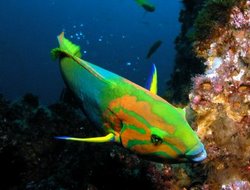

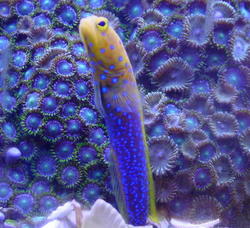



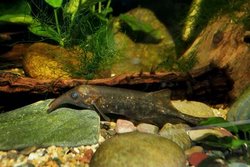

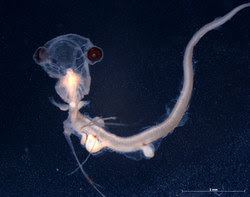
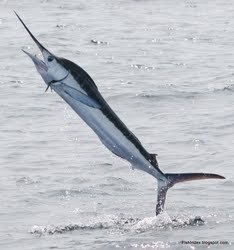







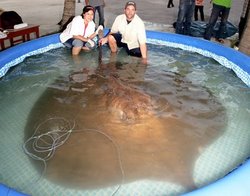
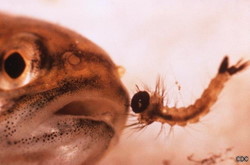







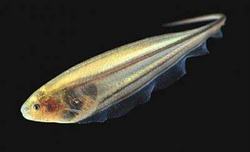
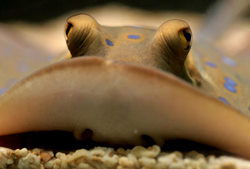





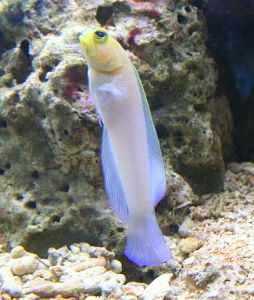





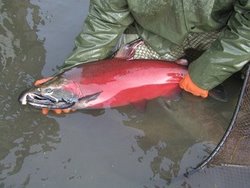

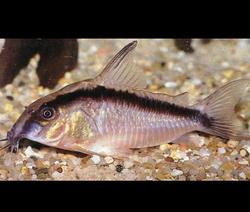
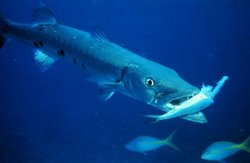



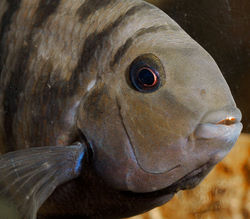


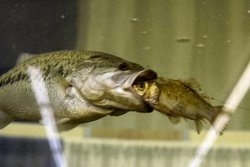



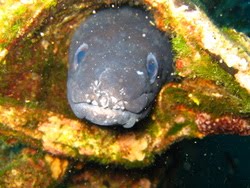


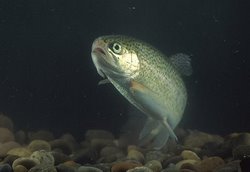
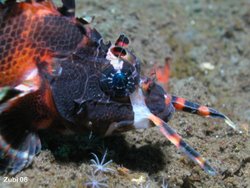
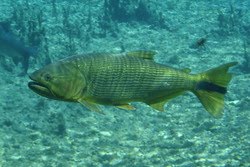

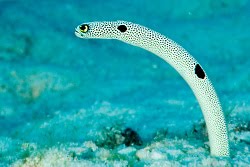
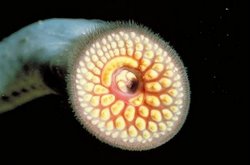



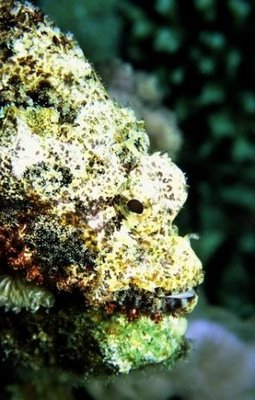
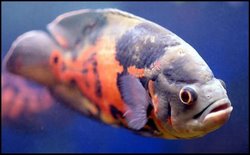

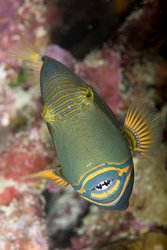

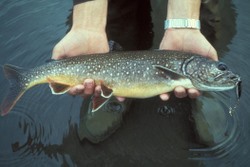
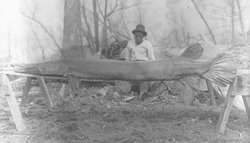
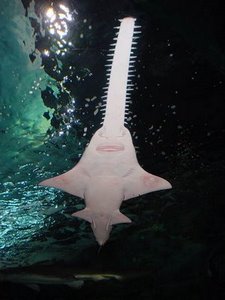















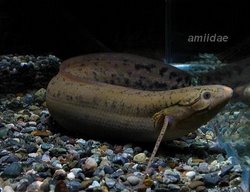

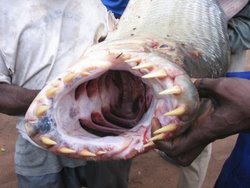










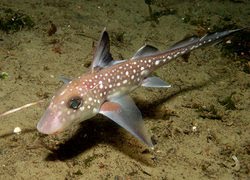
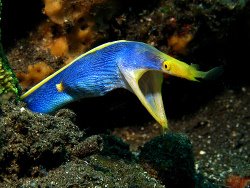


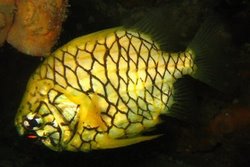
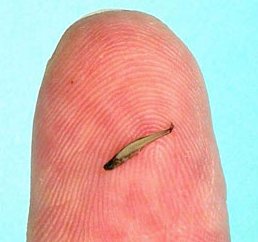
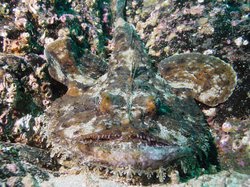
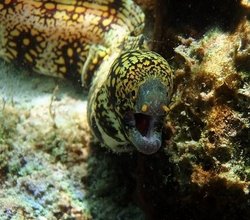

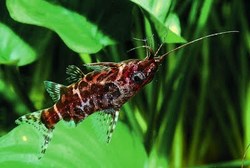







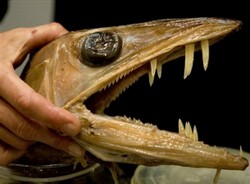

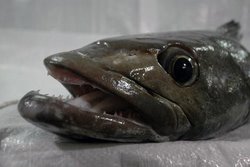
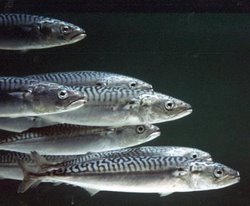
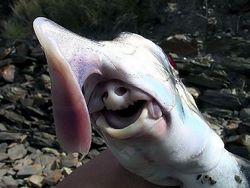
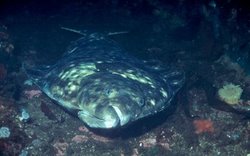
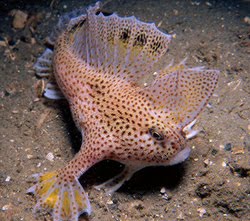
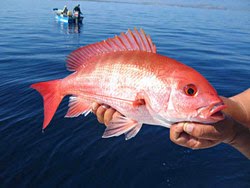

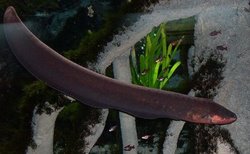

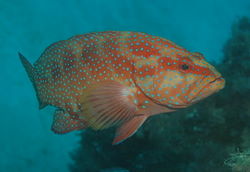

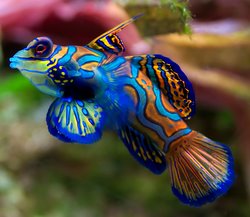
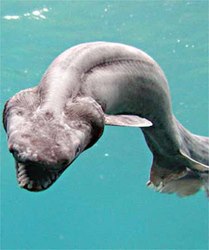
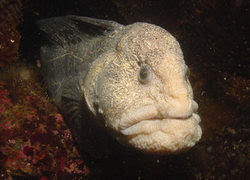
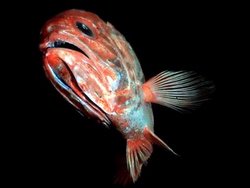
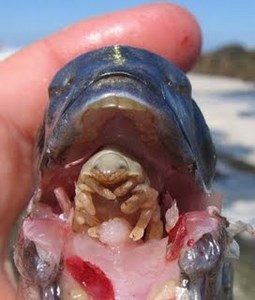

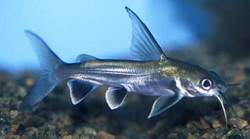
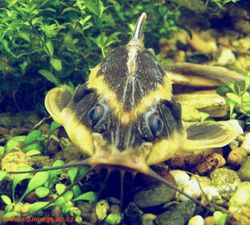
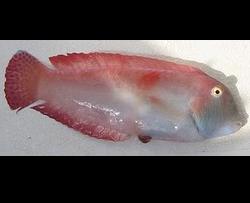








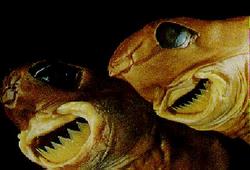
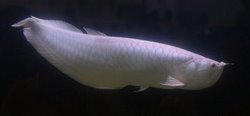
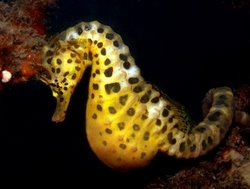
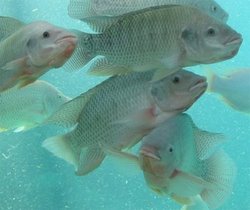
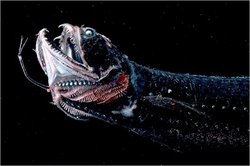
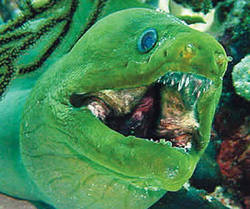


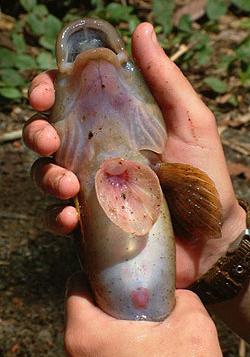


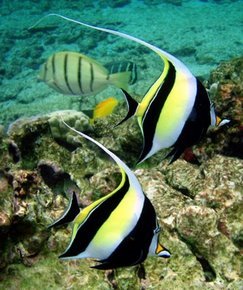

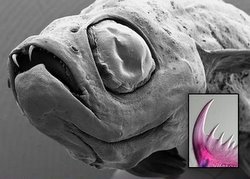
2 comments:
Oh my!
In nostalgia, I started surfing the web about Dorados. I have fond memories of Uruguay, where I lived from 1975 to 1980. My father was a diplomat assigned to Uruguay. An avid fisherman, he used to take me to netherworlds to fish ever since I can remember. And it didn’t end when we arrived in Uruguay.
He and my brother, also an avid angler, learned of the powerful, golden fish through their respective channels early during our tenure in Urugay. I wasn’t with them for the couple of times, but they went to an obscure dam called Baygorria near Paso de los Toros right in the center of Urugay to experiment. First they tried bait. Then they tried lure. After a few trips, they brought back a fair sized fish, hooked with feathered lure. And hence started our technological breakthrough.
Over time, we figured out the perfect parameters to fish Dorados. 1 hour before sunrise to 1 hour past sunrise. 1 hour before sunset to ½ hour after sunset. Outside of these hours, forget it. But more than that, we built the best gear for these powerful beasts. The feathered lure.
It took some time and effort to perfect the art of crafting our lures, but in the end, we made it a habit to make a batch of lures every spring (September down there). We would visit out local chicken butcher shop. We would ask for, and questioningly be handed, bails of bloody, putrid chicken feathers. We would take these home, carefully wash them in the bathtub, and dry. Out of the huge pile of feathers, we would pick only the most fluffy and white feathers to tie to our hook. Can’t remember exactly, but I think a couple of dozen (probably more) feathers fastened to the hook. Then clamped at the top with lead to secure the tie and to properly weight it – finding that perfect weight balance took some time by the way. The lure would be lead by at minimum a foot of wire – these fish have nasty teeth and jaw force.
Fishing Dorados is beautiful. The bite. The jump. The fight. Within the hours cited above, we would find our favorite place just below the dam, oppose side of the gates, and get working. Cast from the shore, about 20, 30 yards downstream from the dam structure. Cast directly across, into the rushing water. Float. Float. Bite! Jerk to set the hook. Then without exception comes the jump. Once very hard at first. Another jump may follow, but not always. But as you reel it in and it realizes it’s close to shore, another jump. Exhilaration. We never used nets or hooks to bring in the fish. The fish were too exhausted by the time they reach shore.
Once you have hooked a fish and there is fish blood on the lure, the lure is exponentially more effective. Don’t know why it was, but pre-applying other fish blood didn’t work. It had to be Dorado blood.
Another remarkable fact we discovered is that when you don’t hook on your cast, the lure floats downriver, and it eventually floats close to shore. Then, as you reel it back in along the shore, the lure awakens Dorados that have been resting/sleeping along the shore. This discovery was amazing it self. It of course occurred only during the first dozen casts or so, since by then you have awoken them all back into the current.
In any case we were extremely successful bring in these fish. I recall bringing 60 plus fish in one morning – none of them less than 20 inches. We would scale them, filet them, salt them, line them up in the icebox, and drive the 3 hours back to Montevideo. Beautiful white flesh. Pan fry until golden brown.
The locals didn’t know much about us for a while. Uruguayans aren’t early risers in the most part. But in the evenings we would sometimes fish alongside them. And they would get perplexed at our ability to hook these fish. They frustrate themselves silly trying to hook them with whatever gear they had prepared. Oftentimes we would give them one of our catches, and they thanked us as if they had won the lottery.
In any case, I now realize our experience was quite unique. I understand hooking one is a treat. And that in hindsight, we were culprits in bringing Dorado population down. I wonder if Dorados still swim around Baygorria.
Anyway, this log was a good way to reach back into my memory cells to bring out the fine times we had.
For what it’s worth.
JO
Oh, and by the way, the reason we used at minimum one foot of wire to the lure was that we lost many lures not using wire. We originally thought we were using too light a line until we witnessed one Dorado that we had brought in bite and crack a rock. Our fingers never ventured close to that jaw after that discovery.
Post a Comment